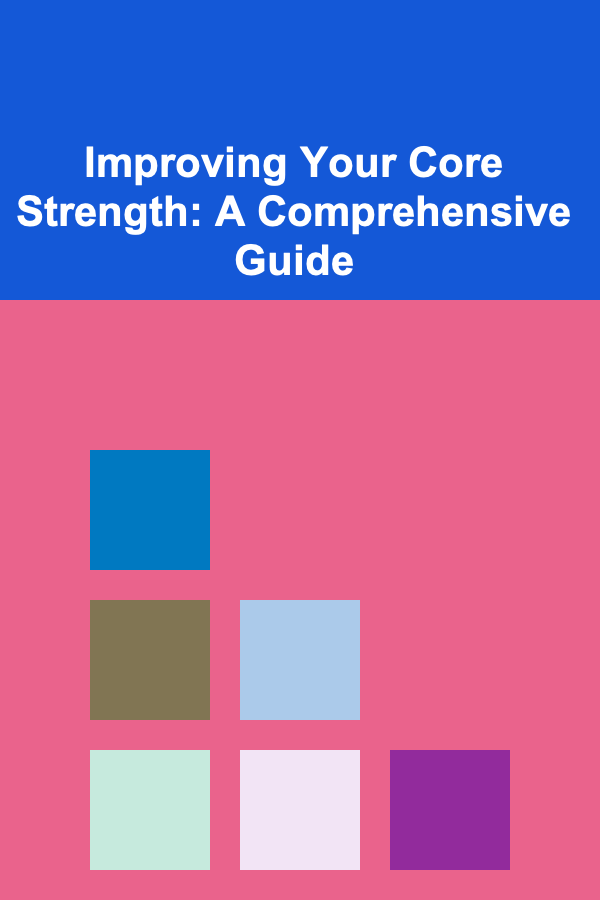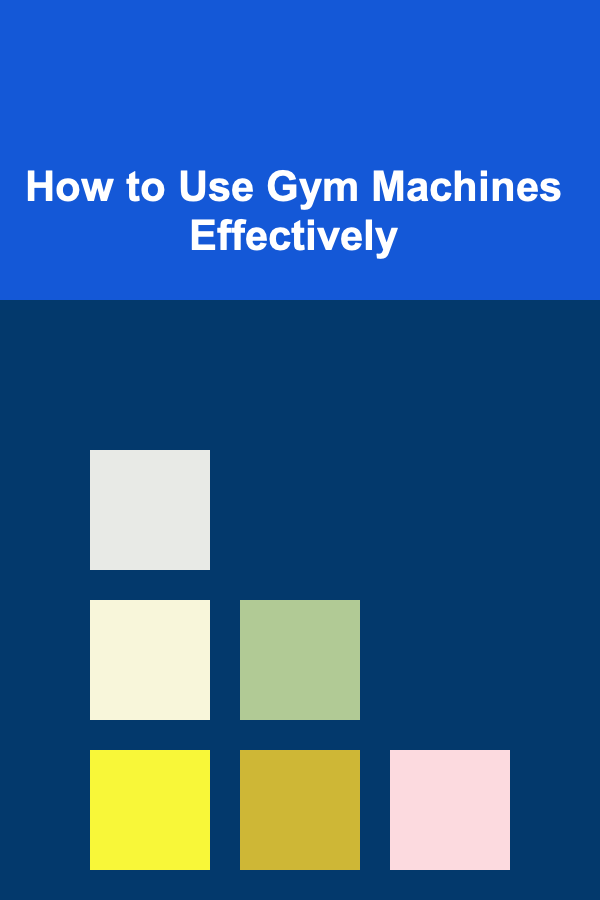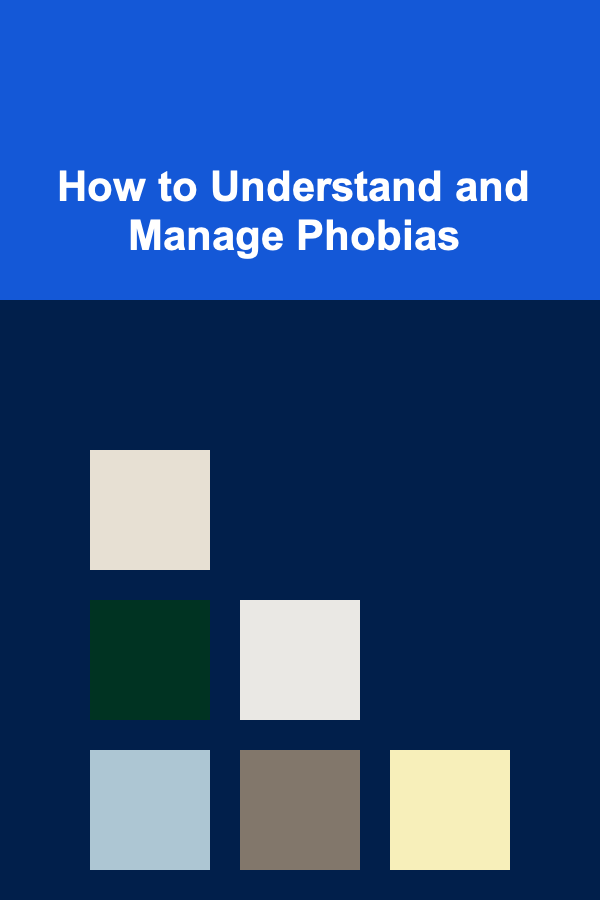
Improving Your Core Strength: A Comprehensive Guide
ebook include PDF & Audio bundle (Micro Guide)
$12.99$10.99
Limited Time Offer! Order within the next:

The term "core strength" is often thrown around in fitness circles, but what does it really mean, and why is it so important? Your core is more than just your abdominal muscles; it encompasses a complex network of muscles that stabilize your spine and pelvis, and are crucial for almost every movement you make. A strong core provides numerous benefits, including improved posture, reduced risk of injury, enhanced athletic performance, and decreased back pain. This comprehensive guide will delve into the anatomy of the core, the benefits of core strength, how to assess your current core strength, and a detailed plan to improve it.
Understanding the Core: Anatomy and Function
The core is not just about achieving a six-pack. It's a three-dimensional structure that includes muscles deep within your torso. These muscles work together to provide stability, generate force, and protect your spine.
Key Core Muscles:
- Rectus Abdominis: The "six-pack" muscle that runs vertically along the front of your abdomen. Its primary function is spinal flexion (bending forward).
- External Obliques: Located on the sides of your abdomen, these muscles are responsible for rotation and lateral flexion (bending to the side).
- Internal Obliques: Located beneath the external obliques, these muscles also contribute to rotation and lateral flexion. They work in coordination with the external obliques on the opposite side.
- Transversus Abdominis (TVA): The deepest abdominal muscle, wrapping around your torso like a corset. It's crucial for stabilizing the spine and maintaining intra-abdominal pressure.
- Multifidus: Small muscles that run along the spine, providing segmental stability and control.
- Erector Spinae: A group of muscles that run along the back of the spine, responsible for extension (bending backward) and maintaining an upright posture.
- Quadratus Lumborum (QL): Located in the lower back, these muscles help with lateral flexion and stabilization of the lumbar spine.
- Diaphragm: The primary muscle for breathing, it also plays a role in core stability by increasing intra-abdominal pressure.
- Pelvic Floor Muscles: These muscles support the pelvic organs and contribute to core stability.
- Gluteal Muscles (Glutes): While technically part of the lower body, the glutes (gluteus maximus, medius, and minimus) are essential for hip extension and stability, which directly impacts core stability.
Functions of the Core:
- Stabilization: The core muscles act as a stabilizer for the spine and pelvis, providing a solid base for movement.
- Force Transfer: The core allows for efficient transfer of force between the upper and lower body. For example, when throwing a ball, the core muscles help generate power from the legs and hips.
- Posture: A strong core helps maintain proper posture, reducing strain on the spine and other joints.
- Protection: The core muscles protect the internal organs and spine from injury.
- Breathing: The diaphragm, a key core muscle, is essential for breathing and also contributes to intra-abdominal pressure, which supports the spine.
Benefits of a Strong Core
Improving your core strength offers a wide range of benefits that extend beyond aesthetics.
- Improved Posture: Strong core muscles help maintain an upright posture, preventing slouching and reducing strain on the spine. This can alleviate back pain and improve overall appearance.
- Reduced Risk of Injury: A strong core provides stability and support for the spine, reducing the risk of back pain, strains, and other injuries. It also improves balance and coordination, decreasing the likelihood of falls.
- Enhanced Athletic Performance: A strong core is essential for generating power and transferring force in athletic activities. It improves balance, stability, and coordination, allowing you to perform better in sports and other physical activities. Whether you're a runner, swimmer, golfer, or tennis player, a strong core will improve your performance.
- Decreased Back Pain: Weak core muscles are a major contributor to back pain. Strengthening the core can alleviate pain and prevent future episodes by providing support for the spine and improving posture.
- Improved Balance and Stability: The core muscles play a crucial role in maintaining balance and stability. This is especially important as we age, as balance tends to decline, increasing the risk of falls.
- Easier Daily Activities: A strong core makes everyday activities, such as lifting groceries, bending over, and carrying objects, easier and less taxing on the body.
- Improved Breathing: Strengthening the diaphragm and other core muscles can improve breathing efficiency, leading to increased energy levels and improved overall well-being.
- Better Digestion: Core exercises can stimulate the digestive system, promoting better digestion and reducing bloating.
Assessing Your Core Strength
Before embarking on a core strengthening program, it's helpful to assess your current level of core strength. This will allow you to track your progress and adjust your training accordingly.
Simple Self-Assessment Tests:
- Plank Test:
- Get into a plank position with your forearms on the ground and your body in a straight line from head to heels.
- Hold the position for as long as possible, maintaining good form.
- Record the time. A good goal for beginners is 30 seconds, intermediate is 60 seconds, and advanced is 90 seconds or more. If you can hold a perfect plank for over 2 minutes, consider adding weight to the plank.
- Bird Dog Test:
- Start on your hands and knees.
- Extend one arm forward and the opposite leg backward, keeping your back straight and core engaged.
- Hold the position for 5-10 seconds, then switch sides.
- Assess your ability to maintain balance and stability without arching your back or rotating your hips.
- Dead Bug Test:
- Lie on your back with your knees bent at a 90-degree angle and your arms extended towards the ceiling.
- Slowly lower one arm towards the floor behind your head while simultaneously extending the opposite leg towards the floor, keeping your lower back pressed against the ground.
- Return to the starting position and repeat on the other side.
- Assess your ability to maintain a stable core without arching your lower back.
- Side Plank Test:
- Lie on your side with your forearm on the ground and your body in a straight line from head to feet.
- Lift your hips off the ground, engaging your obliques.
- Hold the position for as long as possible, maintaining good form.
- Record the time. Compare your time on both sides to identify any imbalances.
Interpreting Your Results:
Use the results of these tests to gauge your current core strength. If you struggle to hold the plank for 30 seconds or have difficulty maintaining balance in the bird dog test, you may need to start with beginner-level exercises and gradually progress as your strength improves. If you can easily perform these tests with good form, you can challenge yourself with more advanced exercises.
Building a Core Strengthening Program
A well-rounded core strengthening program should include exercises that target all the core muscles, focusing on stability, rotation, and anti-extension movements. Start slowly and gradually increase the intensity and duration of your workouts as your strength improves. Remember to listen to your body and avoid pushing yourself too hard, especially when starting out. Proper form is more important than the number of repetitions.
Beginner Core Exercises:
These exercises are designed to build a foundation of core strength and stability.
- Pelvic Tilts:
- Lie on your back with your knees bent and your feet flat on the floor.
- Gently tilt your pelvis forward and backward, engaging your abdominal muscles.
- Focus on maintaining a neutral spine and avoiding arching your lower back.
- Perform 10-15 repetitions.
- Dead Bugs (Beginner Variation):
- Lie on your back with your knees bent at a 90-degree angle and your arms extended towards the ceiling.
- Slowly lower one arm towards the floor behind your head while keeping your knee angle. Focus on pressing your lower back into the ground.
- Return to the starting position and repeat on the other side.
- Perform 10-15 repetitions per side.
- Bird Dog (Beginner Variation):
- Start on your hands and knees, ensuring your hands are directly under your shoulders and your knees are directly under your hips.
- Engage your core and slowly slide one leg straight back, keeping your hips square to the ground. Only slide the leg, don't lift. Hold for a second.
- Return to the starting position and repeat on the other side.
- Perform 10-15 repetitions per side.
- Modified Plank (On Knees):
- Start in a plank position with your forearms on the ground, but with your knees on the ground.
- Engage your core and maintain a straight line from your head to your knees.
- Hold the position for 30 seconds, gradually increasing the duration as your strength improves.
- Cat-Cow Stretch:
- Start on your hands and knees.
- As you inhale, drop your belly towards the floor and lift your head, arching your back (cow pose).
- As you exhale, round your spine towards the ceiling and tuck your chin to your chest (cat pose).
- Perform 10-15 repetitions.
Intermediate Core Exercises:
Once you've mastered the beginner exercises, you can progress to these more challenging movements.
- Plank:
- Get into a plank position with your forearms on the ground and your body in a straight line from head to heels.
- Engage your core and maintain the position for as long as possible, gradually increasing the duration.
- Aim for 60 seconds or more.
- Side Plank:
- Lie on your side with your forearm on the ground and your body in a straight line from head to feet.
- Lift your hips off the ground, engaging your obliques.
- Hold the position for as long as possible, gradually increasing the duration.
- Aim for 30-60 seconds per side.
- Dead Bug:
- Lie on your back with your knees bent at a 90-degree angle and your arms extended towards the ceiling.
- Slowly lower one arm towards the floor behind your head while simultaneously extending the opposite leg towards the floor, keeping your lower back pressed against the ground.
- Return to the starting position and repeat on the other side.
- Perform 10-15 repetitions per side.
- Bird Dog:
- Start on your hands and knees.
- Extend one arm forward and the opposite leg backward, keeping your back straight and core engaged.
- Hold the position for 5-10 seconds, then switch sides.
- Perform 10-15 repetitions per side.
- Russian Twists:
- Sit on the floor with your knees bent and your feet slightly raised.
- Lean back slightly, engaging your core.
- Twist your torso from side to side, touching the floor with your hands (or holding a weight).
- Perform 15-20 repetitions per side.
Advanced Core Exercises:
These exercises are for individuals with a solid foundation of core strength and stability.
- Hollow Body Hold:
- Lie on your back with your arms extended overhead and your legs extended straight.
- Lift your arms and legs off the ground, creating a slight curve in your lower back.
- Engage your core and maintain the position for as long as possible.
- Plank with Arm/Leg Lift:
- Start in a plank position.
- Lift one arm forward, keeping your body stable.
- Return to the starting position and repeat with the other arm.
- You can also lift one leg at a time for an added challenge.
- Reverse Crunch:
- Lie on your back with your knees bent and your feet raised.
- Engage your core and lift your hips off the ground, bringing your knees towards your chest.
- Slowly lower your hips back to the ground.
- Perform 10-15 repetitions.
- Medicine Ball Slams:
- Stand with your feet shoulder-width apart, holding a medicine ball overhead.
- Slam the ball down to the ground in front of you, engaging your core.
- Catch the ball and repeat.
- Perform 10-15 repetitions.
- Hanging Leg Raises:
- Hang from a pull-up bar with an overhand grip.
- Engage your core and lift your legs towards your chest, keeping your legs straight or slightly bent.
- Slowly lower your legs back to the starting position.
- Perform 8-12 repetitions.
- Dragon Flags:
- Lie on your back on a bench. Grip the bench behind your head.
- Engage your core and lift your entire body off the bench, from your shoulders to your feet, keeping a straight line. You should only be touching the bench with your upper back and head.
- Slowly lower your body back down, maintaining control.
- Perform 5-10 repetitions. This exercise is VERY challenging and should only be attempted by those with very strong cores.
Incorporating Core Work into Your Routine
Core work doesn't have to be a separate workout. You can incorporate core exercises into your existing routine in several ways:
- Warm-up: Include core activation exercises in your warm-up to prepare your muscles for exercise.
- Strength Training: Add core exercises between sets of your main exercises.
- Cool-down: Finish your workout with core strengthening exercises to improve stability and posture.
- Dedicated Core Days: Dedicate one or two days per week solely to core training.
Aim to perform core exercises at least 2-3 times per week, allowing your muscles time to recover between workouts.
Important Considerations
- Proper Form: Focus on maintaining proper form throughout each exercise. If you're unsure about your form, consult with a qualified fitness professional.
- Progressive Overload: Gradually increase the intensity, duration, or difficulty of your exercises as your strength improves.
- Consistency: Consistency is key to building core strength. Stick to your training plan and make core work a regular part of your routine.
- Listen to Your Body: Pay attention to your body and avoid pushing yourself too hard, especially when starting out. Rest when you need to and don't hesitate to modify exercises if necessary.
- Nutrition: Fuel your body with a healthy and balanced diet to support muscle growth and recovery.
- Hydration: Stay hydrated by drinking plenty of water throughout the day.
- Breathing: Focus on proper breathing during each exercise. Exhale during the exertion phase (e.g., when lifting your legs in a crunch) and inhale during the recovery phase.
Tip: Engaging the TVA (Transversus Abdominis) is crucial for core stability. To engage your TVA, imagine you are bracing for a punch to the stomach or trying to pull your belly button towards your spine. Maintain this engagement throughout your core exercises.
Common Mistakes to Avoid
- Neglecting the Deep Core Muscles: Focusing solely on the rectus abdominis (six-pack muscle) without engaging the deeper core muscles can lead to imbalances and reduced stability.
- Using Momentum: Relying on momentum instead of muscle engagement reduces the effectiveness of the exercises and increases the risk of injury.
- Holding Your Breath: Holding your breath during core exercises can increase blood pressure and reduce stability.
- Arching Your Back: Arching your back during exercises like planks and dead bugs can strain your lower back.
- Performing Exercises Too Quickly: Performing exercises too quickly reduces muscle activation and increases the risk of injury.
- Ignoring Pain: Ignoring pain can lead to more serious injuries. If you experience pain, stop the exercise and consult with a healthcare professional.
Conclusion
Improving your core strength is a worthwhile investment in your overall health and well-being. By understanding the anatomy and function of the core, assessing your current strength, and following a well-structured training program, you can build a strong and stable core that supports your spine, improves your posture, enhances your athletic performance, and reduces your risk of injury. Remember to focus on proper form, progressive overload, and consistency, and listen to your body along the way. With dedication and patience, you can achieve a strong and functional core that will benefit you for years to come.

How to Clean and Maintain Your Home Appliances Effectively
Read More
How to Use Gym Machines Effectively
Read More
How to Understand and Manage Phobias
Read More
How to Refinance Your Mortgage
Read More
How To Incorporate Collagen-Boosting Products
Read More
How to Develop Space Mining Operations
Read MoreOther Products

How to Clean and Maintain Your Home Appliances Effectively
Read More
How to Use Gym Machines Effectively
Read More
How to Understand and Manage Phobias
Read More
How to Refinance Your Mortgage
Read More
How To Incorporate Collagen-Boosting Products
Read More